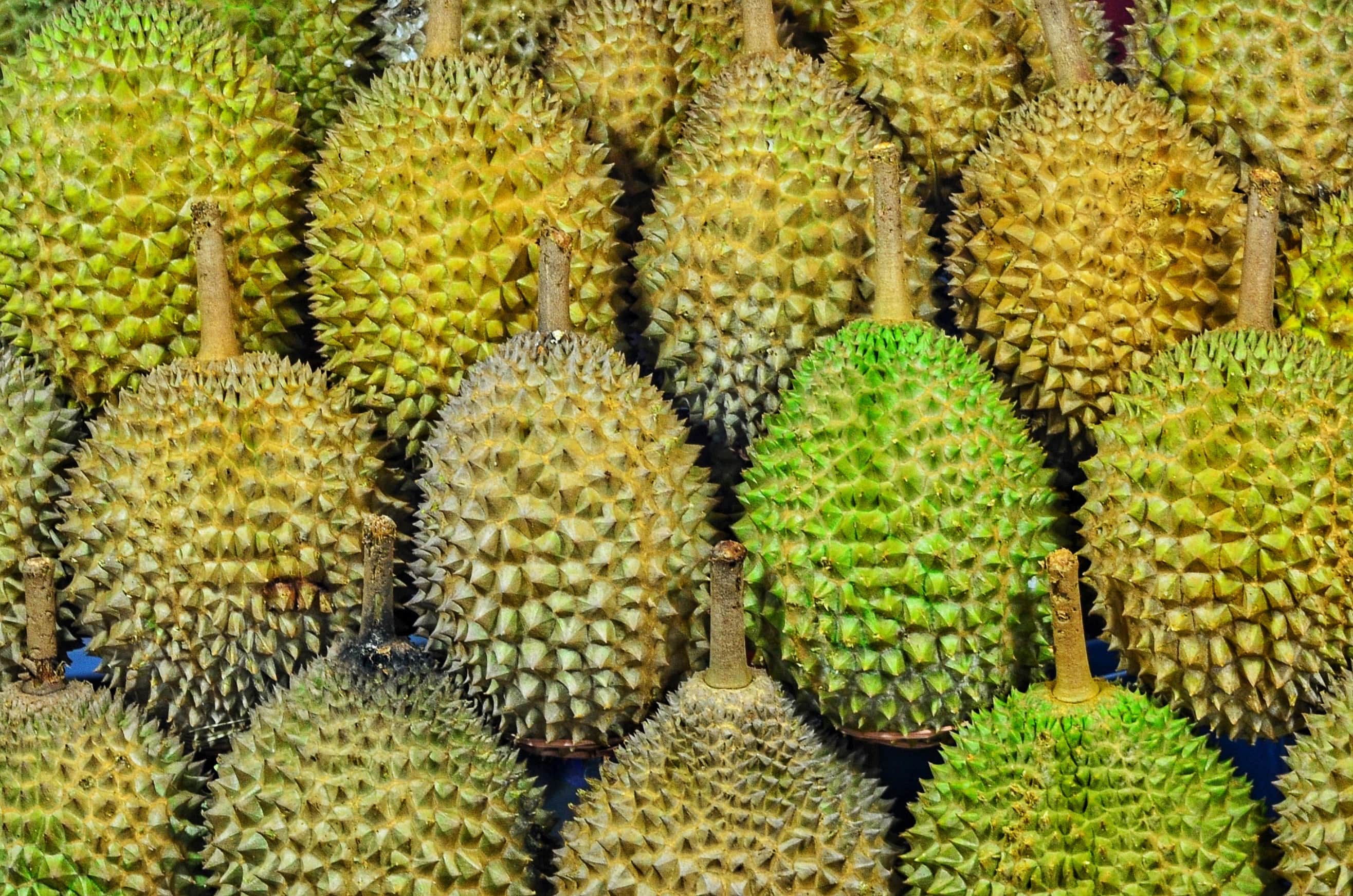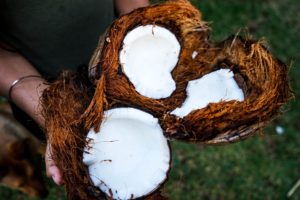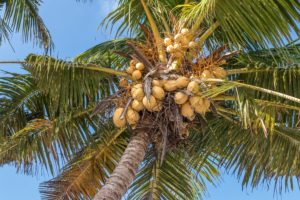World’s Smelliest Fruit or King of Fruits?
The durian – some love it, others hate it.
And indeed – its powerful smell and unique taste will give you an experience, you’ll never forget.
Whether it’s deep appreciation or the great disgust you feel, let’s have a look at the most discussed fruit in the world!
Where can I find it?
The durian is at home in Southeast Asia but has its origins in Indonesia and Malaysia. Borneo and Sumatra are the two islands where this extraordinary fruit originally comes from.
Nowadays durian farms can be found throughout the whole region: Thailand, Cambodia, Vietnam, India and Sri Lanka, with Thailand being the main exporter of durian.
There are more than 30 different durian species and harvesting procedures vary from region to region. In Thailand, for example, the fruit is picked when still unripe, which results in a milder taste that is easier to handle. In Malaysia and Indonesia, farmers usually wait until the ripe fruit falls down from the tree.
The name of the fruit comes from the Malaysian word duri, which means “sharp spike”.
What does it look like?
Talking about spikes, the durian has an unmistakable appearance.
The durian is an oval fruit, the size of a bowling ball. The outside shell is covered by many small sharp spikes. The colour ranges from green and yellow to brown. Inside you’ll find hard non-edible seeds surrounded by sticky flesh. Depending on the state of ripeness, the flesh can be pale or darker yellow and sometimes even slightly red.
One fruit can weigh up to several kilos and if that one falls off a tree, you should be far away!
What does it taste like?
It’s almost impossible to describe the taste of a durian – it’s so unique that you have to try it yourself!
The taste depends on the ripeness of the fruit. The younger ones have vegetable-like, firm flesh. The taste is relatively mild and it’s the perfect fruit for beginners.
For advanced eaters and durian lovers, the fruit can’t be ripe enough. The riper it is, the more intense the taste and the creamier the consistency. The flesh gets almost as soft as butter and has a sweet, slightly nutty, and overripe warm taste. The ones who don’t like durian would rather use words like old cheese, rotten onions or stinky feet.
The special taste remains in your mouth for a while after eating – for the pleasure of some and the horror of others.
How do I eat it?
It’s best to try durian at one of the fruit stalls on the streets.
Depending on where you are, you may even find farmers who bring the freshly fallen fruits directly from their trees – the dirt still between the spikes.
However, picking the right fruit is a science on its own. The stem should be fresh and green and the fruit should already have its unmistakable powerful fragrance. An honest seller will choose the right one for you and open it straight away.
With gloves and a knife, the fruit is cut open and you’re able to see the juicy yellow flesh. As soon as you put a piece in your mouth, the sticky flesh will melt off by itself. Be careful, in between you’ll find the inedible seeds.
If you don’t like the taste the first time, you should give it a few more tries. Sometimes it takes a little while to get used to the new, unfamiliar taste. Funny enough – a lot of durian lovers didn’t like them in the beginning!
How healthy is it?
There is a reason that the durian is considered the King of Fruits.
It’s loaded with Vitamin C and other nutrients. Rich in raw fats, protein, potassium, fibre, and iron, it can improve your muscle strength, lower your blood pressure and improve the health of your skin.
The rich consistency will leave a warm sensation around your stomach. After eating this heated fruit it’s recommended to drink cool water.
Even better, if you find mangosteen. Usually, they’re in season around the same time. Mangosteen is considered the Queen of Fruits and its refreshing, slightly sour taste is the perfect opposite to balance the heavy, rich durian.
What else do I need to know?
Of course, there are some things to keep in mind when enjoying this exceptional fruit.
Pregnant women and people with heart problems should avoid eating them.
In addition, it should be consumed moderately. When eaten excessively, it can cause dizziness and a feeling of being drunk. Needless to say – together with alcohol this fruit isn’t a good combination.
Durian is banned in most public transport and buildings. You’ll find NO DURIAN signs in many Asian countries in metros, trains, hotels, airports, and airplanes. The fruit still develops a strong smell after a few hours and no food wrapping or shopping bags will be able to prevent that.
Interested in more great Indonesian food?
Read also The art of preparing Sambal and why it always tastes different!
What if I don’t like the taste of pure durian?
If you don’t like the strong taste of pure durian, there is good news:
The durian hype brought unique taste into many desserts, chocolate, coffee, toffees, cakes, and even ice cream. For a dry snack in between, you can buy crispy durian chips.
That’s not just a perfect alternative to pure fruit, but also a great gift for your friends at home!
Have you ever tried durian? How did you like it?
Photo by Jonny Clow on Unsplash




